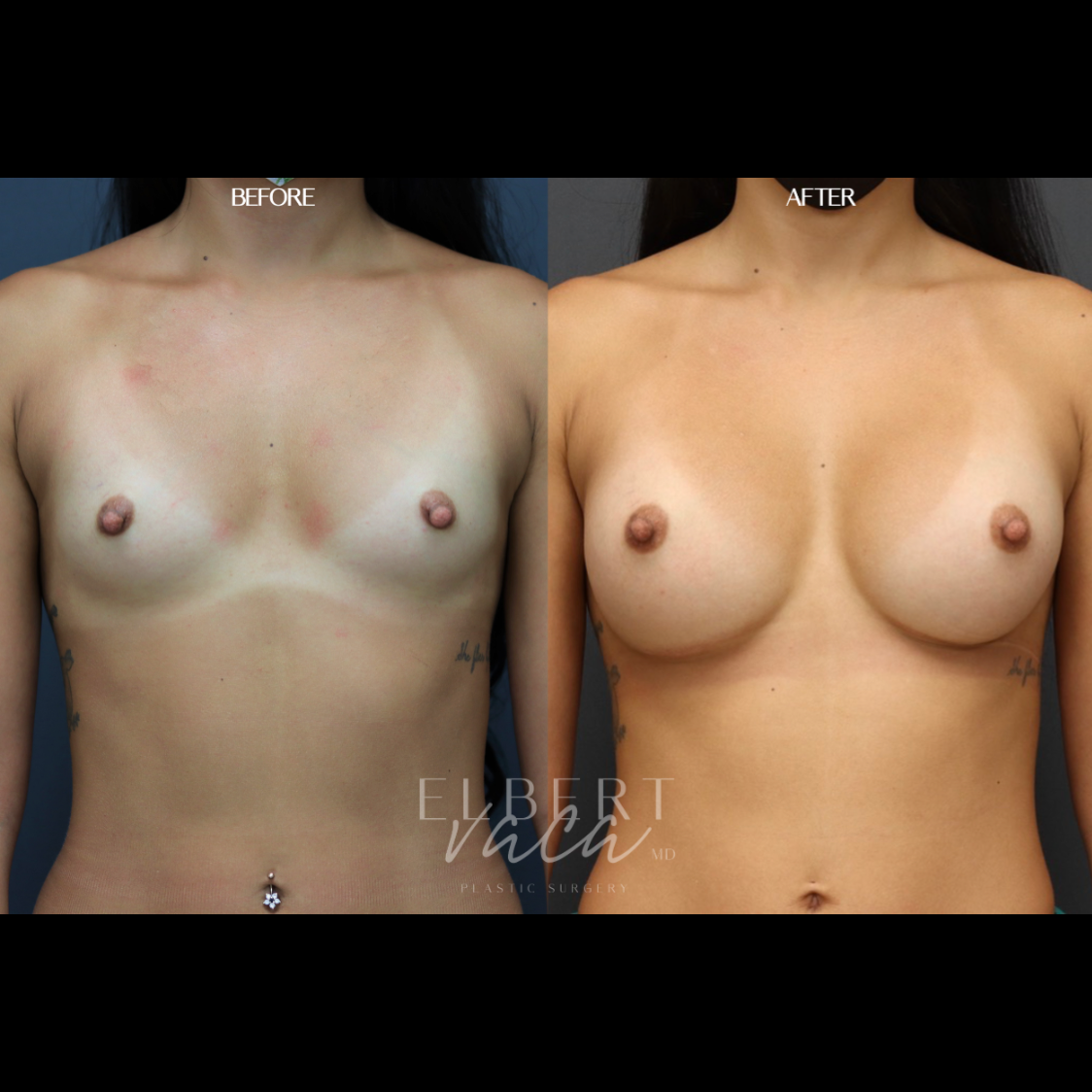Breast augmentation, or augmentation mammaplasty, is a surgical procedure that most commonly involves use of either a silicone or saline filled implant to enhance the shape and size of the breasts. Breast augmentation is the most popular aesthetic surgical procedure performed in the United States. Breast augmentation can be used to treat several concerns including:





There are 3 possible incisions that can be used for breast augmentation including:
The most commonly used incisions are beneath the breast or around the areola because these offer the best control to properly place the breast implant in the majority of patients. These scars are typically easy to conceal.
It is important to know that all breast implants use an outer silicone shell, which can then be filled with either silicone or saline. There are advantages and disadvantages to choosing between a silicone and saline filled breast implant.
Silicone filled breast implants have a softer and more natural feel than saline implants. However, silicone implants are more expensive, require a slightly longer incision, and rupture of the implant shell can be more difficult to detect. After breast augmentation with a silicone implant, the FDA recommends a breast MRI or ultrasound 5 years after surgery, then every 2 – 3 years thereafter to evaluate the integrity of the implant.
Saline implants can be placed using a smaller incision and rupture of the implant can be easily detected. However, saline implants are more prone to visible rippling, feel firmer and less like natural breast tissue. The potential disadvantages of saline filled breast implants become more apparent with larger sized breast implants.
Thankfully no. Modern breast implants can remain intact significantly longer than 10 years – if there are no issues with your breasts implants, then no surgery is necessary.
Reasons to undergo further surgery after breast augmentation include breast changes with aging and pregnancy/breastfeeding – these patients may experience stretching of their skin, hormonal changes of their breast tissue, and drooping of the breasts which may benefit from changing the breast implants and/or a breast lift.
Other potential reasons to change breast implants include capsular contracture, implant rupture, the desire for a different implant size or type, visible implant rippling, the desire to remove the breast implants.
All surgical procedures carry a degree of uncertainty and risk. Thankfully, the risk of a major complication is rare.
Scar can form around the breast implant leading to a change in the shape of the breasts over time, otherwise known as “capsular contracture”.
Every woman naturally has some degree of asymmetry between both breasts – it is important to know that some degree of asymmetry will remain after surgery.
With textured breast implants (i.e., implants with a textured outer shell), there is the potential risk of developing a rare form of cancer called, “Breast Implant Associated Anaplastic Large Cell Lymphoma”. For this reason, Dr. Vaca exclusively uses smooth surfaced implants, with rare exceptions.
Breast implants are not lifelong devices and will likely require replacement during the patient’s lifetime.